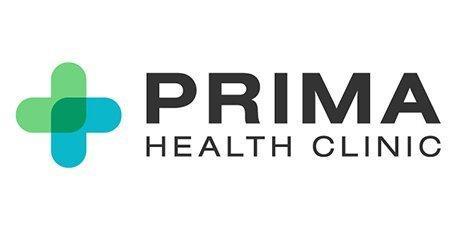Platelet-rich Fibrin (PRF) Injections

Prima Health Clinic
Internists & Anti-Aging & Restorative Medicine located in Dallas, TX
Platelet-Rich Fibrin (PRF) therapy is a cutting-edge, natural treatment that harnesses the body’s own healing power to rejuvenate and repair tissues. By concentrating platelets and growth factors from your own blood, PRF enhances tissue regeneration and promotes faster healing, making it ideal for both aesthetic and medical purposes. This non-surgical treatment is commonly used for facial rejuvenation, hair restoration, and accelerating recovery after procedures. The natural healing properties of PRF stimulate collagen production, improve skin texture, and restore volume, resulting in a more youthful, vibrant appearance. Patients in the Dallas-Fort Worth Metroplex area can visit Prima Health Clinic to explore how PRF therapy can help them achieve their aesthetic and wellness goals using the body’s own regenerative capabilities.
Platelet-rich Fibrin (PRF) Injections Q & A
What is PRF injection?
Platelet rich fibrin (PRF) injection has become a popular treatment option for individuals suffering from knee arthritis. The procedure involves extracting a small amount of blood and then separating its components to obtain platelet rich fibrin, a substance that is chock-full of growth factors and has healing properties. The PRF is then injected directly into the knee joint to help reduce inflammation and pain while promoting healing.
How are PRP injections performed?
During the procedure, a small amount of blood is drawn from the patient's arm and spun in a centrifuge. This separates out the platelet-rich plasma, which is then injected directly into the affected area.
What injuries can PRP injections treat?
PRP injections can be used to treat a variety of conditions, particularly those involving tendons, muscles, joints, and ligaments. They are often applied in sports medicine to help athletes recover from injuries such as tennis elbow, rotator cuff tears in the shoulder, Achilles tendon ruptures, and knee sprains. PRP injections have also shown promise in managing osteoarthritis, particularly in the knee, by reducing pain and improving joint function.
In addition, they can aid in the repair of ligament and muscle injuries, reducing recovery time. It's important to note that while PRP treatment can be effective, it is not a cure-all and its effectiveness may vary depending on the specific injury and patient's overall health.
Do PRP injections have side effects or risks?
-
PRP injections, like any injection procedure, carry potential side effects and risks.
-
Possible side effects include infection, nerve injuries, pain at the injection site, tissue damage, and reactions to the anesthetic used.
-
Allergic reactions to PRP are minimal since it is derived from the patient's own blood.
-
Some patients may experience temporary increase in inflammation and pain after the procedure, which is part of the natural healing response triggered by PRP injection.
-
It is crucial to have qualified healthcare providers administer these injections and for patients to fully understand the potential risks and benefits before proceeding.
-
What to Expect During a Visit?
-
When you arrive for your PRP injection appointment, you will be initially taken through a comprehensive consultation. Your healthcare provider will review your medical history, discuss your symptoms, and may perform a physical examination of the area causing discomfort. They will explain the PRP procedure in detail, discussing the potential risks and benefits, to help you make an informed decision about the treatment.
-
Following the consultation, if you choose to proceed, blood will be drawn, usually from your arm, and placed into a centrifuge to separate the platelets. The PRP is then prepared for injection. The injection site is cleaned and sometimes numbed with a local anesthetic to minimize discomfort. Guided by ultrasound or fluoroscopic imaging, the provider will then inject the PRP into the affected area.
-
After the injection, the area may be iced to reduce any swelling or discomfort, and you'll be given post-procedure care instructions. Most patients are able to leave the office and return home on the same day. Overall, it's a straightforward procedure but expect to spend about an hour at the clinic for the entire process.
Key Points:
-
PRP injections use patient's own platelets to stimulate tissue repair and accelerate healing.
-
Treats conditions involving tendons, muscles, joints, and ligaments. Effective for sports injuries and osteoarthritis.
-
Potential side effects include infection, nerve injuries, pain at injection site, and tissue damage. Minimal risk of allergic reactions.
-
Quick recovery, return to normal activities soon. Avoid strenuous use of treated area post-procedure.
-
Gradual improvements noticed weeks after the procedure. Number of treatments varies based on severity and duration of condition.
-
PRP appointment includes medical history review, detailed explanation of procedure, and discussion of risks and benefits. Blood drawn and prepared for injection. Guided by imaging, PRP injected into affected area. Process takes about an hour.
Recovery and Aftercare:
After a PRP injection, patients should rest and protect the affected area, avoiding strenuous activities. Discomfort at the injection site can be managed with over-the-counter pain relievers as recommended by the healthcare provider. As the healing process progresses, physical therapy or rehabilitation exercises may be introduced. Most patients can resume regular activities within a few weeks, but the timeline depends on the location and severity of the injury. Follow post-treatment instructions closely for optimal recovery and healing.
Services
-
Aestheticmore info
-
Emotional Well Beingmore info
-
Food Sensitivitiesmore info
-
Gastrointestinal Healthmore info
-
General Health Maintenancemore info
-
Hormonal Healthmore info
-
IV Nutritionmore info
-
Laser Therapymore info
-
Musculoskeletal Healthmore info
-
Nutritional Well Beingmore info
-
Platelet-rich Fibrin (PRF) Injectionsmore info
-
Pro-Pell Therapy Programmore info
-
Sleep Evaluationsmore info
-
Watch PATmore info
-
Cardiometabolic Healthmore info
